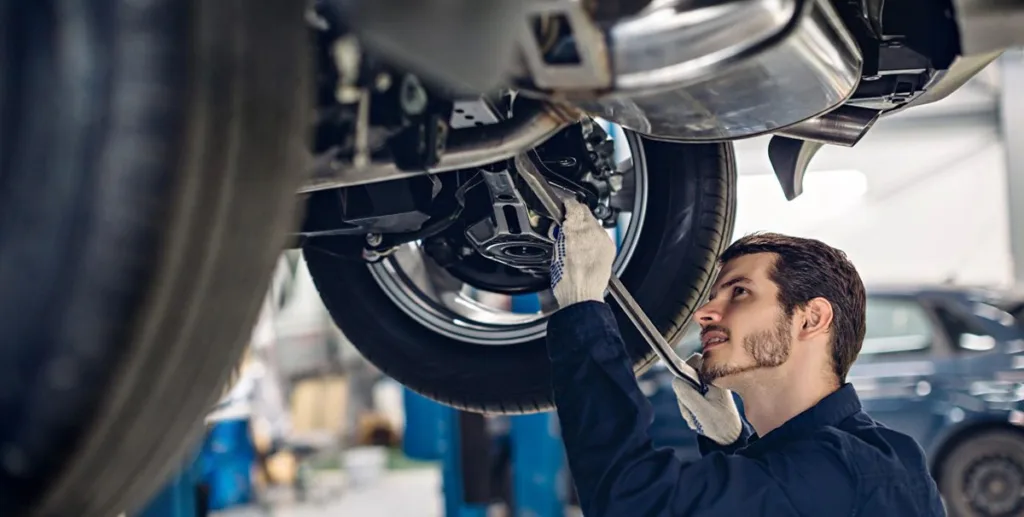All Categories
Featured
When it concerns automobile maintenance, tires are typically neglected, despite being an essential variable in both safety and efficiency. Selecting the right set of tires can make a substantial distinction in your driving experience, especially in regards to handling, fuel efficiency, and road safety and security. Comprehending how to pick the appropriate tires for your lorry needs understanding your driving conditions, performance demands, and the different tire choices readily available. Below's an extensive guide to assist you make the best selection.
![]()
All-Season Tires: These are one of the most usual kind, designed for a range of driving conditions, consisting of dry and damp roadways. They supply a balanced efficiency, making them an excellent selection for day-to-day driving in areas with modest environments.
Summer Tires: Suitable for warmer climates, summer tires offer exceptional performance on dry and wet roads, using exceptional grip and handling. They are not ideal for snowy or icy problems.
Wintertime Tires: Winter season tires are particularly designed to deal with snow, ice, and freezing temperatures. Made from an unique rubber substance that stays versatile in winter, they feature deep footsteps that hold the roadway, providing far better control and safety in winter problems.
Performance Tires: For those driving sporting activities cars or searching for boosted handling, performance tires offer better responsiveness, cornering abilities, and boosted grip. These tires prioritize performance however might compromise comfort and durability.
225: The width of the tire in millimeters. 50: The facet ratio, or the elevation of the sidewall as a portion of the tire's width. R: Radial building and construction, which is one of the most typical design for contemporary tires. 17: The diameter of the tire in inches, matching the size of the wheel. When replacing your tires, it's generally best to match the original dimension for your lorry to preserve the intended balance of handling, comfort, and security. Changing tire sizes can impact efficiency, consisting of speedometer accuracy and gas efficiency.
![]()
Urban and City Driving: If the majority of your driving occurs on well-paved city streets, all-season tires are typically the most effective choice. They give ample grasp and convenience in moderate problems, with a focus on efficiency.
Freeway Driving: For constant highway drivers, tires that provide resilient durability and low road noise, such as exploring tires, are optimal. These tires provide a smooth trip and are maximized for gas efficiency over cross countries.
Off-Road Driving: If you drive an SUV or vehicle and regularly venture off the ruined path, you'll need tires made for rugged surface. All-terrain or mud-terrain tires supply far better traction and toughness for driving on crushed rock, mud, or unpaved roads.
Balanced Footstep: Many all-season tires include a symmetrical tread pattern, which offers a well balanced performance for regular driving conditions. It's excellent for dry roads, along with moderate damp problems.
Unbalanced Footstep: These tires have different step patterns on the outdoors and within, improving cornering and security. They use a better hold on both completely dry and damp roadways, making them a popular choice for performance cars.
Directional Footstep: Developed with a V-shaped pattern, these tires excel at transporting water away from the walk. They provide much better traction in stormy and snowy conditions, lowering the threat of hydroplaning.
Inspecting Tire Pressure: Underinflated tires can negatively influence taking care of and fuel effectiveness, while overinflated tires can boost the threat of blowouts. Inspect the tire stress regularly and guarantee it meets the maker's specifications.
Tire Turning: To ensure even use, tires ought to be revolved every 6,000 to 8,000 miles. Irregular wear can trigger early tire failure and affect your car's placement and handling.
![]()
Wheel Alignment: Imbalance can trigger your tires to use erratically and negatively impact your vehicle's handling. Have your lorry's positioning checked on a regular basis, specifically if you observe pulling away.
Verdict. Whether you need all-season tires for daily driving, wintertime tires for snowy conditions, or efficiency tires for much better handling, recognizing your needs is vital to making the appropriate option. Regular tire maintenance is additionally essential for keeping your tires in optimal problem.

- Comprehending Tire Types. The very first action in choosing the right tire is recognizing the various kinds and their features. Each type of tire is engineered for certain problems, so knowing which one fits your demands is vital.
All-Season Tires: These are one of the most usual kind, designed for a range of driving conditions, consisting of dry and damp roadways. They supply a balanced efficiency, making them an excellent selection for day-to-day driving in areas with modest environments.
Summer Tires: Suitable for warmer climates, summer tires offer exceptional performance on dry and wet roads, using exceptional grip and handling. They are not ideal for snowy or icy problems.
Wintertime Tires: Winter season tires are particularly designed to deal with snow, ice, and freezing temperatures. Made from an unique rubber substance that stays versatile in winter, they feature deep footsteps that hold the roadway, providing far better control and safety in winter problems.
Performance Tires: For those driving sporting activities cars or searching for boosted handling, performance tires offer better responsiveness, cornering abilities, and boosted grip. These tires prioritize performance however might compromise comfort and durability.
- Tire Size Matters. When picking new tires, tire size is one of the most essential elements to think about. Tire size is indicated by a collection of numbers published on the sidewall, such as "225/50R17." Below's exactly how to review them:
225: The width of the tire in millimeters. 50: The facet ratio, or the elevation of the sidewall as a portion of the tire's width. R: Radial building and construction, which is one of the most typical design for contemporary tires. 17: The diameter of the tire in inches, matching the size of the wheel. When replacing your tires, it's generally best to match the original dimension for your lorry to preserve the intended balance of handling, comfort, and security. Changing tire sizes can impact efficiency, consisting of speedometer accuracy and gas efficiency.
- Driving Problems and Tire Efficiency. Where you drive and just how you drive plays a considerable duty in determining the right tire for your car. Below's what to take into consideration based upon your driving behaviors:

Urban and City Driving: If the majority of your driving occurs on well-paved city streets, all-season tires are typically the most effective choice. They give ample grasp and convenience in moderate problems, with a focus on efficiency.
Freeway Driving: For constant highway drivers, tires that provide resilient durability and low road noise, such as exploring tires, are optimal. These tires provide a smooth trip and are maximized for gas efficiency over cross countries.
Off-Road Driving: If you drive an SUV or vehicle and regularly venture off the ruined path, you'll need tires made for rugged surface. All-terrain or mud-terrain tires supply far better traction and toughness for driving on crushed rock, mud, or unpaved roads.
- Tire Footstep Patterns. Tire walk patterns influence just how your automobile grips the roadway, specifically in unsafe or damp conditions. Understanding tread design is key to making certain risk-free handling:
Balanced Footstep: Many all-season tires include a symmetrical tread pattern, which offers a well balanced performance for regular driving conditions. It's excellent for dry roads, along with moderate damp problems.
Unbalanced Footstep: These tires have different step patterns on the outdoors and within, improving cornering and security. They use a better hold on both completely dry and damp roadways, making them a popular choice for performance cars.
Directional Footstep: Developed with a V-shaped pattern, these tires excel at transporting water away from the walk. They provide much better traction in stormy and snowy conditions, lowering the threat of hydroplaning.
- Tire Upkeep for Durability. Once you have actually picked the best tires, it's crucial to preserve them properly to extend their life-span and make certain ongoing performance. Routine tire upkeep includes:
Inspecting Tire Pressure: Underinflated tires can negatively influence taking care of and fuel effectiveness, while overinflated tires can boost the threat of blowouts. Inspect the tire stress regularly and guarantee it meets the maker's specifications.
Tire Turning: To ensure even use, tires ought to be revolved every 6,000 to 8,000 miles. Irregular wear can trigger early tire failure and affect your car's placement and handling.

Wheel Alignment: Imbalance can trigger your tires to use erratically and negatively impact your vehicle's handling. Have your lorry's positioning checked on a regular basis, specifically if you observe pulling away.
- Seek advice from with an Expert. While you might have a general understanding of the types of tires available, it's constantly a great idea to speak with a tire specialist. They can give expert recommendations based on your details lorry model, driving problems, and performance needs.
Verdict. Whether you need all-season tires for daily driving, wintertime tires for snowy conditions, or efficiency tires for much better handling, recognizing your needs is vital to making the appropriate option. Regular tire maintenance is additionally essential for keeping your tires in optimal problem.
Latest Posts
Change Your Home with Durable Hardwood Flooring from Carpet Interiors Floor & Home
Published Apr 19, 25
1 min read
Montclare Auto Repair: Your Reliable Expert for Expert Brake & Engine Fixes
Published Apr 19, 25
2 min read
Secure Your Future with WyHy's Special Certificate Options
Published Apr 18, 25
1 min read
More
Latest Posts
Change Your Home with Durable Hardwood Flooring from Carpet Interiors Floor & Home
Published Apr 19, 25
1 min read
Montclare Auto Repair: Your Reliable Expert for Expert Brake & Engine Fixes
Published Apr 19, 25
2 min read
Secure Your Future with WyHy's Special Certificate Options
Published Apr 18, 25
1 min read